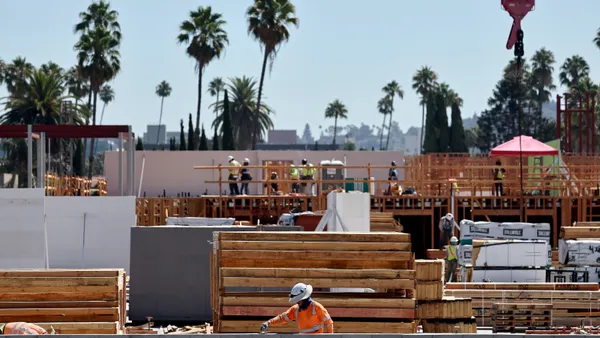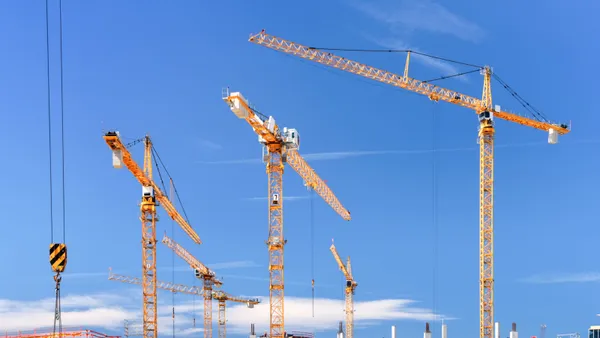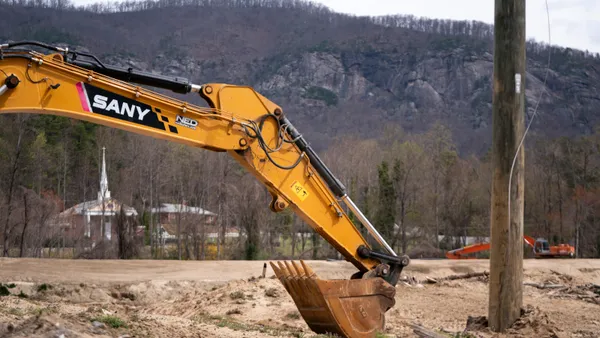In a pay-when-paid industry like construction, late payments are often the rule, not the exception. The lower down the chain you are, the longer it takes to get paid—and the more these late payments can hurt financial stability and cashflow.
But slow payments hurt more than subcontractors. They also harm the industry. Faster payments allow subs to quickly reinvest money into the next project and make payments to suppliers before interest accrues to keep the construction pipeline flowing and create revenue for others.
For decades, however, traditional payment application (pay app) processes have bred slow payments by relying on outdated, paper-heavy and manual workflows that involve checks, emails, spreadsheets and PDFs.
As construction technology changes and projects move faster, outdated pay app processes can make late payments even later. In fact, according to PwC, the construction industry has a days sales outstanding (DSO) average of 51—the longest of any industry in the country.
These slow payments can create several problems.
1. Delayed project timelines
When payments from GCs are overdue, subcontractors may not have the funds they need to pay their workers and suppliers. This can hamper project schedules in a few ways. If a sub can’t pay its employees, then work will quickly come to a halt. If suppliers don’t receive their payments from subs as a result of the GC not paying, then they won’t provide materials for the project.
When subcontractors don’t receive payment, they can take action in one of two ways: file a lien or stop work. No matter which option they choose, timelines will be negatively affected.
2. Missed opportunities for discounts
Many subcontractors offer payment incentives or early payment discounts to GCs that pay within a certain amount of time (or before the due date).
If paying on time becomes a frequent practice for you, those savings start to add up. You could see six-figure savings just by sending payments a few weeks earlier. Early payments also lower overall project costs, which benefits you and your client.
3. Damaged reputations
If you develop a reputation for not paying in a timely manner, word will spread that you’re difficult to do business with. Subs may think twice about working with you and your subcontractor pool will dry up.
On-time payments are an easy way to keep valuable subcontractors happy. “There are precious few quality subcontractors in the first place,” describes Chuck Wilson, CEO at National Systems Contractors
Association (NSCA), a nonprofit trade association that represents commercial integrators. “GCs should do everything they can to make sure they don’t put subcontractors at financial risk simply due to delayed payments. When subs have terms and conditions in contracts that go beyond 30 days, that can turn them into a bank. They’re carrying the bill. When a GC sits on money longer than that, they put their trusted and necessary subs at risk.”
The impact of prompt payment legislation
In addition to delays and damaged relationships, there’s another problem looming on the horizon that most GCs aren’t aware of: potential fines and penalties.
Within the past few years, prompt payment legislation has been enacted across Canada to alleviate payment delays in construction. Ontario was the first to reform its construction laws to include this type of legislation in 2019. Since then, many other provinces have followed suit. Alberta is the newest addition to the list, passing its own provisions in August 2022.
Canada’s federal government also passed its own prompt payment and adjudication rule, which hasn’t taken effect yet.
As a result of these swift changes in Canada, prompt payment legislation will likely make its way to the United States for private projects as well.
“We’re going to see more regulatory compliance legislation at the state and local levels that says to general contractors, ‘If you don’t pay your subs on time, then you’ll be fined,’ ” explains Mike Milligan, chief growth officer at GCPay. “You’ll not only have a lien placed on your property so no other construction work can be done until everyone is paid up, but you’ll also have to pay an out-of-pocket penalty.”
Many U.S. GCs don’t realize that similar legislation already exists for government projects. For example, the Little Miller Act requires prime contractors on state projects to post bonds that guarantee performance of their contractual duties and/or the payment of subs and suppliers. For federally funded projects, the U.S. Federal Prompt Payment Act requires the GC to pay interest on late payments.
“When subcontractors have been hanging out there for 180 days waiting for payment, we tell them to file a claim,” says Wilson. “It’s remarkable how payment suddenly comes once a GC hears this. Most people don’t realize these laws exist. Eventually, I think non-government projects will be headed in the same direction. Having payment requirements set up within the construction channel—from the owners down to the subs of a sub—makes sure everyone gets paid in a timely fashion and keeps America’s small businesses alive.”










